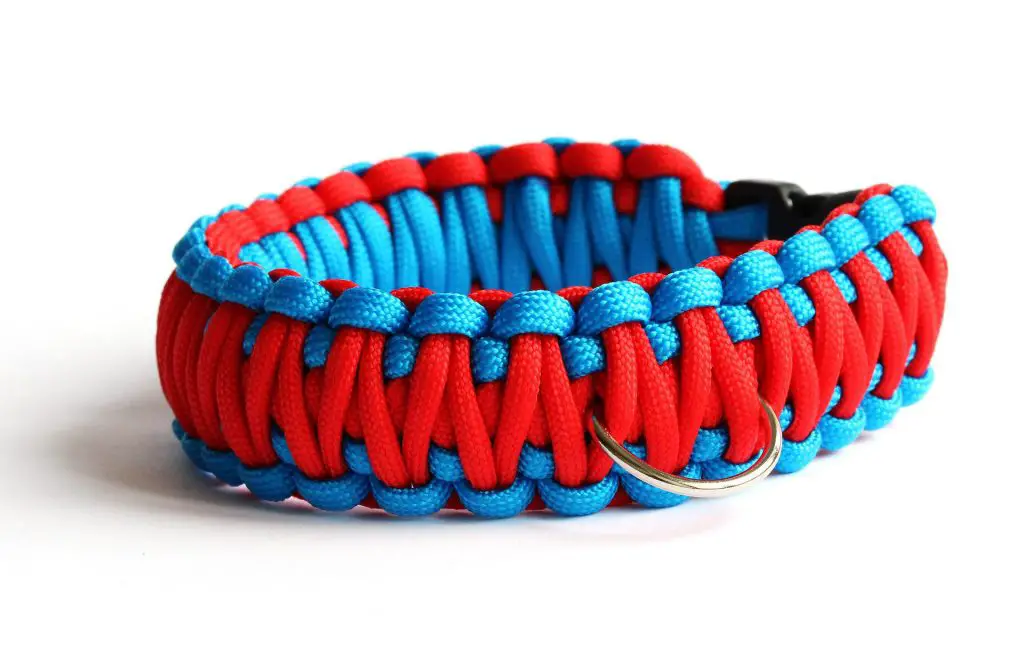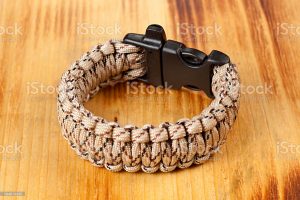Paracords are as important as any outdoor gear you are taking along with you. It is an excellent survival tool because it comes in handy in several ways. For instance, it is a good choice for fishing, building shelter, starting a fire, setting traps, climbing, security, or even moving heavy objects. It can do all of these things because of its strength – minimum breaking strength.
The minimum breaking strength is the amount of weight a paracord can support before it breaks or snaps. Therefore, it is safe to say that paracords differ from one to another. This concept leads us to understand the different types of paracord available for use.
What Are The Different Paracord Types?

Generally, you could group paracords in several ways – could be brand, strength, or even designs.
However, the three most common classifications include Paracord sizes, types, and power. Besides, this classification determines what paracord is suitable for you.
According to the U.S. Military standards, there are 8 Paracord types.
| How to Find Preppers in Your Area |
| What Should Every Prepared Hunter Carry for Outdoor Emergencies? |
| How to Disappear Completely: Vanish Without a Trace |
Type I
The Type I Paracord is the lowest and cheapest paracord available. It has a minimum tensile strength of 95 lbs. and 1 core strand; thus, it is suitable for low-duty purposes.
Type IA
Another Type I Paracord, which supports a little more weight – about 100 lbs. but with no core, the strand is the Type IA. It is also useful for a few minor purposes.
Type II
A little further for outstanding weight obligations is the Type II Paracord. It has a minimum tensile strength of 400 lbs. and comes with 7 core strands. However, it is rare, which is why it isn’t always used for survival.
Type IIA
Likewise, Type IIA Paracord is not often easy to come by since it has no core strands. It has a minimum breaking strength of 225 lbs., which makes it useful.
Type III
The most significant and universally acceptable paracord is the Type III Paracord. It is military-grade and designed for different kinds of purposes, including survival. This paracord has a breaking strength of 550 lbs., on the minimum. It has between 7 to 9 core strands, depending on the brand.
Type IV
A little more advanced in quality and strength is the Type IV Paracord. It is strong because it can hold weights as much as 700 lbs. There are 11 core strands in this cord, and it is useful for some purposes.
MIL-C-5040
Usually, any military-grade cord is regarded as a MIL-C-5040 Paracord. In this case, it is a thick cord with seven 3-ply nylon yarns for each strand. It offers much more quality control than usual.
Commercial-Spec Cord
The last type of paracord for use is the Commercial-Spec Cord. It is only designed for everyday use and doesn’t have to be strong. Mostly, it is used for making bracelets or jewelry.
Learn more about Paracord HERE.
Paracord Sizes and Strengths
Another way to look at the different types of paracords is with the sizes and strengths.
Nano Paracord
A Nano Paracord is the thinnest cord you will ever come across, with no special use at all – only minor ones. It is mostly used in making bracelets as a Type I Cord since it has a 36-lbs tensile strength, 0.75mm, and no strands.
Micro Paracord
Another Type I cord is the Micro Paracord, which is useful for making necklaces and laced bracelets. It has a tensile strength between 90 to 100 lbs., with a 1.18mm diameter and no strands.
95 Paracord
A certified Type I Cord that falls between the Nano and Micro Paracords is the 95 Paracord. It is used in making wind chimes, bracelets, and a few non-heavy-duty operations.
275 Paracord
The 275 Paracord is a lot stiffer than the previous ones; therefore, it is a Type II Paracord. It has a minimum breaking strength of 275 lbs., 5 core strands, and a 2 mm sheath diameter. It is useful in making lanyards due to its power and inner features.
325 Paracord
325 Paracord is another Type II cord capable of holding weights up to 325 lbs. Its strength, 2mm sheath diameter, and 3 core strands are useful in making belts and keychains.
425 Paracord
A little further on Type II cords is the 425 Paracord, which can handle much better projects. It has an averagely great strength that makes it useful in making buckles. It comes with a 3mm sheath diameter and 3 inner strands for maximum use.
550 Paracord
The standard 550 Paracord is the best for survival. It is capable of doing so much because it has a minimum breaking strength of 550 lbs. It has a 4mm sheath diameter with 7 to 9 core strands. Moreover, it is multipurpose in design.
650 Paracord
If you ever need a Type IV beefy cord, the 650 Paracord is an excellent choice. It comes with 4 puffy filler strands and a 4mm sheath diameter. It is perfect for heavy-duty purposes.
750 Paracord
Going bigger and better on Type IV cords is the 750 Paracord. It is thicker and stronger due to its 5mm sheath diameter and 11 core strands; hence, it is perfect for making cord locks and buckles. It is indeed a tactical paracord.
Other paracord sizes and strengths include: 1/32” Elastic Cord, 1/16” Elastic Cord, 1/8” Shock Cord, and ¼” Shock Cord
Conclusion
Everyone comes to a point where it is difficult to make decisions on what they want. Sometimes, it takes extra effort to find what is perfect or suitable to use. Paracords are not an exemption to this concept of selection or buying; there are several types on the market, making it challenging to choose what to use.
However, if you need a paracord to use based on the different types available, you should look at what each of them has to offer. With this simple procedure, you would have your options limited and eventually find what you want.
If you have any queries feel free to reach out in the comments section below.
Check out our website for more content like this.


